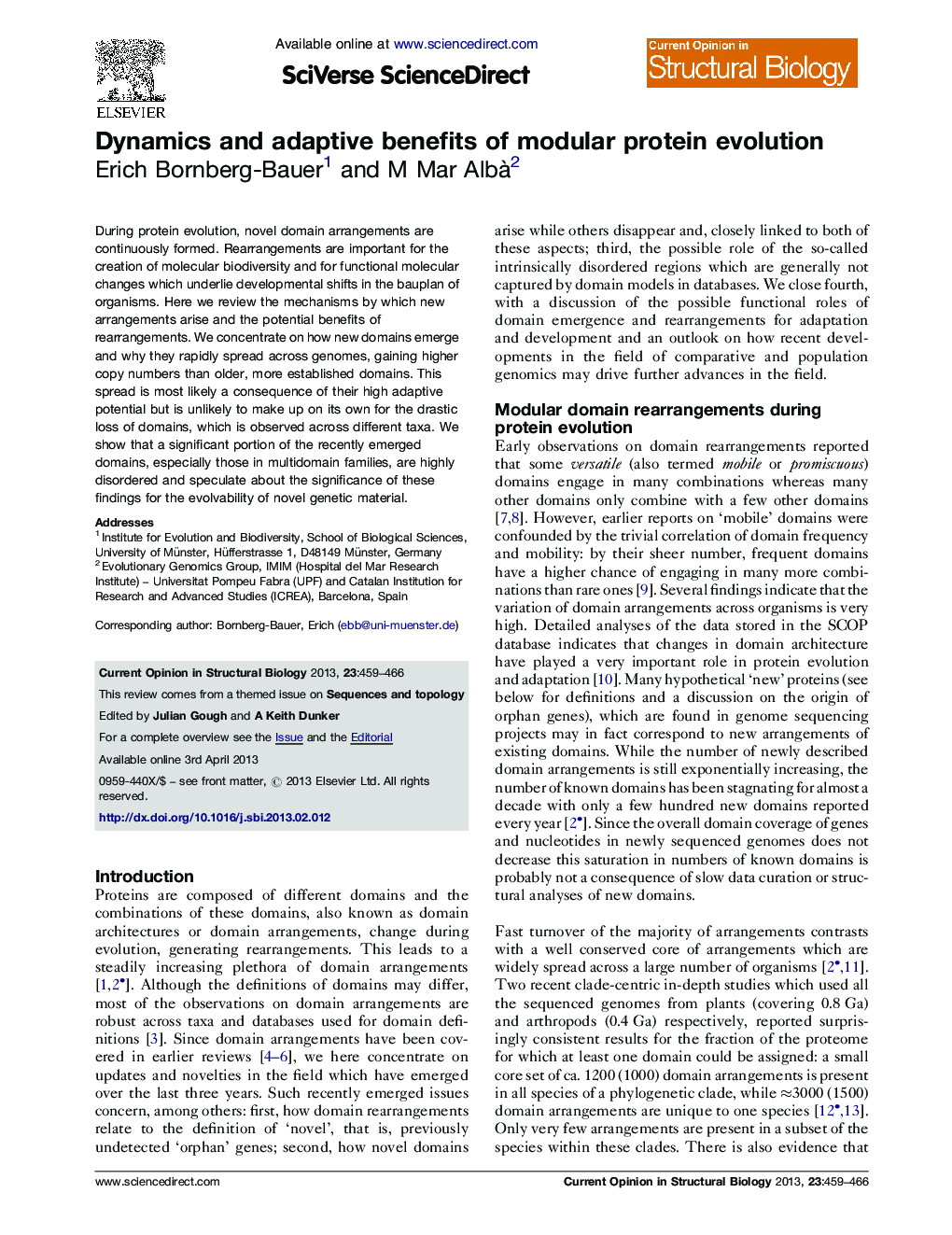| Article ID | Journal | Published Year | Pages | File Type |
|---|---|---|---|---|
| 1979138 | Current Opinion in Structural Biology | 2013 | 8 Pages |
During protein evolution, novel domain arrangements are continuously formed. Rearrangements are important for the creation of molecular biodiversity and for functional molecular changes which underlie developmental shifts in the bauplan of organisms. Here we review the mechanisms by which new arrangements arise and the potential benefits of rearrangements. We concentrate on how new domains emerge and why they rapidly spread across genomes, gaining higher copy numbers than older, more established domains. This spread is most likely a consequence of their high adaptive potential but is unlikely to make up on its own for the drastic loss of domains, which is observed across different taxa. We show that a significant portion of the recently emerged domains, especially those in multidomain families, are highly disordered and speculate about the significance of these findings for the evolvability of novel genetic material.
Graphical abstractFigure optionsDownload full-size imageDownload high-quality image (239 K)Download as PowerPoint slideHighlights► Many domains are erased along every lineage thus depriving genomes of building blocks. ► Novel domains are rare but spread rapidly in genomes and confer a high adaptive value. ► Novel domains arise in their own ORFs, by exonisation or extending ORFs. ► Rearrangements of proteins are evolutionary fast and drive molecular biodiversity. ► Rearrangements entail subtle but important adaptations, triggering gene family growth.
